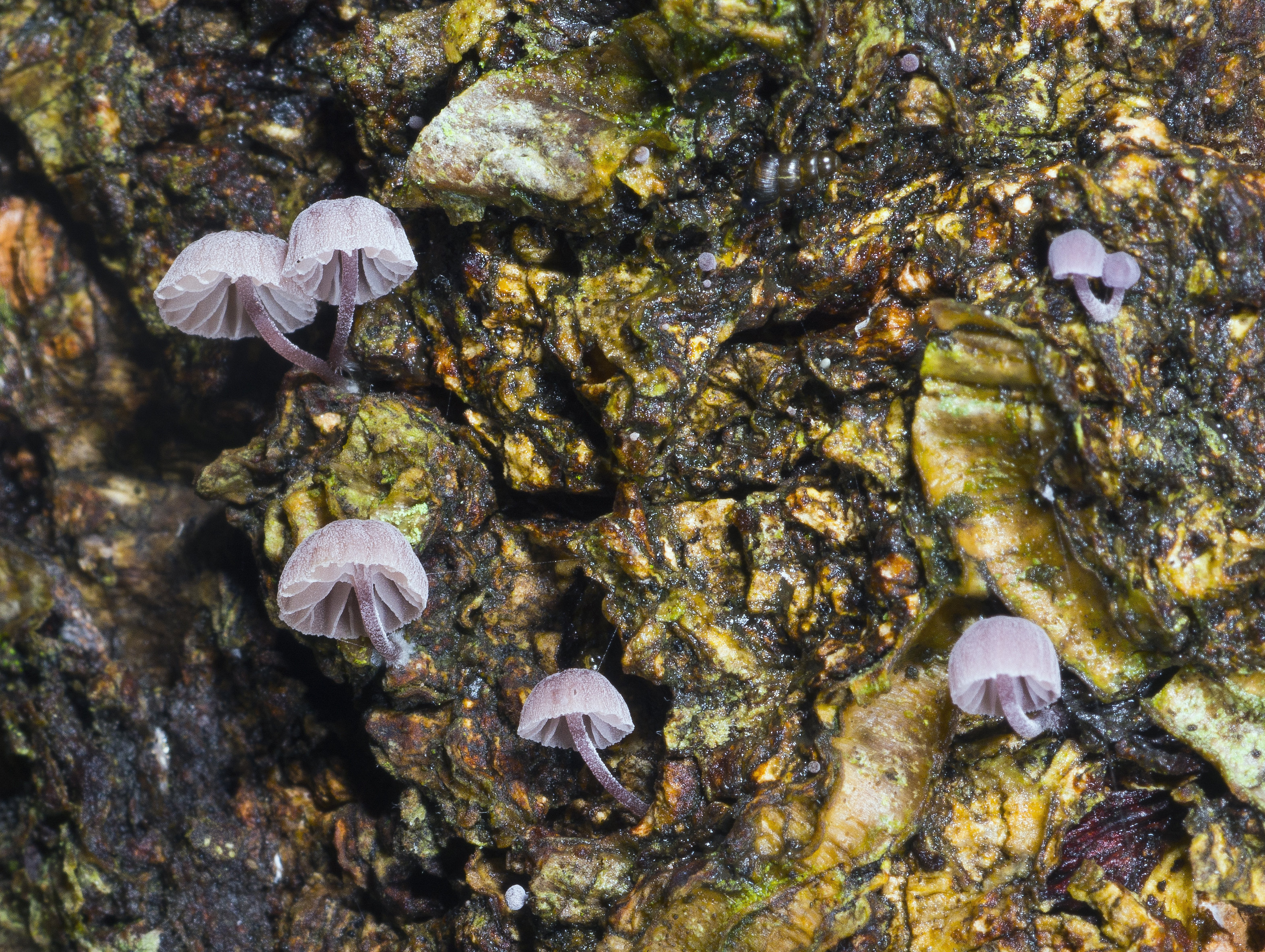Mycena meliigena
Mycena meliigena
Description
Microscopic characters
Cap 5-10 mm across, hemispherical, parabolical to convex, often somewhat flattened or depressed centrally, sulcate, translucent-striate, pruinose, vinaceous red, brownish pink, dark violet or pale brown with a lilaceous tinge, turning more brownish at age. Gills 6-14 reaching the stem, broad, the edge convex, adnate, more or less decurrent with a short tooth, at first concolorous with the cap, then whitish and finally more or less sepia grey-brown, the edge paler. Stem 4-20 x 0.2-1 mm, pruinose to white-floccose, glabrescent, becoming shiny, more or less concolorous with the cap, base densely covered with long, white fibrils. Odour none. Basidia 30-36 x 10.5-13.5 µm, clavate, 2- or 4-spored. Spores from 4-spored basidia 8-11 x 8-9.5 µm, from 2-spored basidia up to 14.5 µm, Qav ˜ 1.1, globose to subglobose, amyloid. Cheilocystidia 15-40 x 6-14 µm, occurring mixed with the basidia, clavate, covered with unevenly spaced, simple to branched, curved to tortuous excrescences up to 12.5 µm long. Pleurocystidia absent. Lamellar trama dextrinoid. Hyphae of the pileipellis 2.5-9 µm wide, covered with warts or cylindrical excrescences. Hyphae of the cortical layer of the stem diverticulate, the terminal cells up to 80 µm long, usually slender, clavate, diverticulate. Clamps present in 4-spored form, absent in 2-spored form.
Ecology and distribution
On (usually moss-covered) bark of various living deciduous trees. Autumn to winter. Common in south-east Norway, more rare elsewhere.


